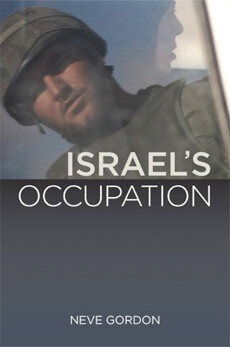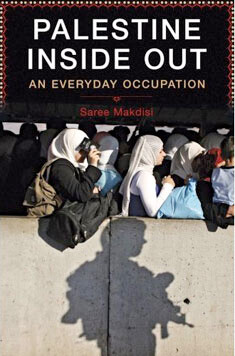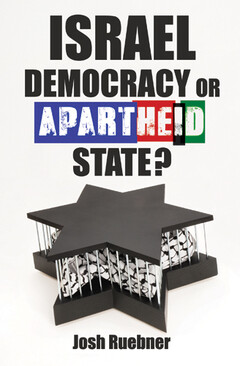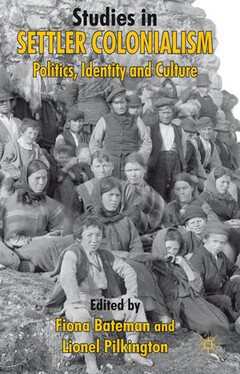The Electronic Intifada 13 October 2008

The professional book-reviewer will hardly complain about this state of affairs. The activist reviewer, however, will rapidly tire of reading successive accounts of the same series of events, and will finally demand that any new book worth its salt should present a radically new perspective on these events, and/or advocate new and more effective modes of combating the occupation, and/or have the potential to influence public opinion in the right direction.
In view of the above-mentioned proliferation, it is astonishing that in his new book, in Israel’s Occupation, Neve Gordon can claim with apparent accuracy that an “overview of the occupation” is “something that has not yet been done.”
Described by the inimitable Alan Dershowitz as “a despicable example of a self-hating Jew and a self-hating Israeli,” Gordon is an academic who, having been seriously wounded during his military service on Israel’s northern border, became director of Physicians for Human Rights and an active member of the Arab/Jewish partnership Ta’ayush. In view of these facts, and Gordon’s professed “passionate commitment to Israel” (The Nation, 12 May 2008), Dershowitz’s rabid verbal slavering seems more mischievous than ever. While advancing in roughly chronological order, Gordon organizes his chapters around specific themes: “The Infrastructure of Control,” “The Invisible Occupation,” “Identification Trouble,” “The Intifada,” “The Separation Principle,” and so forth.
Israel’s Occupation, however, is less a conventional history than a carefully argued critique of the statist illusions of traditional commentary. By “statism” Gordon means a view of “the Israeli state as a free agent issuing policies unhindered by contingencies” and of Palestinian resistance as “led by people who stand in some free zone and whose beliefs and actions have not been shaped by the occupation and Israel’s controlling apparatuses.” As against this, he proposes a “genealogy of Israel’s forms of control and an analysis of how they interact …, suggest[ing] that the excesses and contradictions engendered by the controlling apparatuses help … shift the emphasis among the modes of power … shap[ing] Israel’s policy choices and Palestinian resistance.” Confusingly, the word “excesses” here means something like “unintended consequences.” Perhaps no single theme resonates with more monotonous emphasis throughout the book than the fact that Israel’s ill-considered actions since 1967 have consistently “blown back” in its face. Indeed even when it succeeded in its aims, that success rapidly morphed into something unanticipated and unwelcome to the occupier, cursed as it is with that inability to learn from history so characteristic of imperial and colonial regimes. The consequent shattering of Palestinian society into “warlordism, a la Somalia” is ultimately “inimical to [Israel’s] own interests.”
Gordon divides the course of the occupation into five periods. At first the military government (1967-80) sought to improve the standard of living of Palestinians in the occupied West Bank and Gaza Strip, not from altruism but in order to “normalize” the occupation while simultaneously producing the illusion that it was temporary.
Secondly, the misnamed Civil Administration (1981-1987) “represented Israel’s recognition that the methods it had hitherto employed to normalize the occupation … were not working” as well as an “admission that the occupation was not temporary.”
Thirdly, the first Palestinian intifada (1987-1993) was a response to the contradiction “between Israel’s insistence that the Palestinians manage themselves … and its ongoing efforts to repress all manifestations of Palestinian nationalism.” Rabin’s “iron fist” policy “was, paradoxically, a sign of the failure of existing forms of control … since power is tolerable only insofar as it manages to hide part of itself …” (one of Michel Foucault’s more straightforward insights).
Fourthly, the Oslo years (1994-2000) represented Israel’s attempt to “outsource the occupation” by turning the newly created Palestinian Authority into a “sub-contractor.” Gordon is magnificently scathing about Oslo, which “managed to undo the intifada’s most important achievements” by causing “the disappearance of vigorous popular and civil movements” and by “normalizing” the occupation all over again.
Most recently, the second Palestinian intifada saw Israel suspending all legality — including its own draconian and inherently lawless laws — in order to brutally crush Palestinian resistance and, in effect, to transfer responsibility for the welfare of the population from the PA to various charity organizations. Taking his cue from Foucault and the Italian philosopher Giorgio Agamben, Gordon analyzes Israel’s controlling apparatuses and practices in terms of three fundamental modes of power: “disciplinary, bio-, and sovereign.” Since these modes bleed into one another, the philosophically innocent reader may find their attribution to Israel’s successive practices somewhat confusing. The broadest progression (or regression), however, is from a “politics of life” (which nonetheless entailed much killing) in the wake of 1967, to the present “destruction of the infrastructure of existence” in which the Palestinian is reduced to homo sacer, someone “who can be killed without it being considered a crime” (Agamben). In further defining this progression/regression as one “from colonization to separation,” Gordon is again taking risks with his terminology. If colonization “attempts to manage the lives of the colonized inhabitants while exploiting the captured territory’s resources,” separation interests itself solely “in the resources” without “in any way … assum[ing] responsibility for the people.” But it is misleading to suggest that the latter is different in essence from the former, constituting as it does merely a different modality of colonization. Gordon implicitly concedes as much when he uses the phrase “colonial project” for Israel’s occupation as a whole.
There are those who will query Gordon’s decision to focus on the consequences of the 1967 war, despite his acknowledgment that “the Israeli-Palestinian conflict cannot be reduced to the military occupation of the West Bank, Gaza Strip, and East Jerusalem” and that “one cannot understand the current disputes … without taking into account the ethnic cleansing that took place during and after the 1948 War.” With some chutzpah he asserts that “I am interested in interrogating how the Israeli military occupation has operated rather than examining the root causes of and possible solutions to the conflict.” Nonetheless, on the last page he tells us that:
“… the key to solving the conflict is by addressing the structural incongruities of the occupation, the most important of which is the distinction Israel has made between the Palestinians and their land. Once Israel relates to the two as one inseparable unit, a just and peaceful solution can evolve …”
This tight-lipped formulation may evoke nods from academics, but will hardly energize activists. Gordon has undoubtedly deepened our understanding of the occupation, and for this he is to be commended — the sentimental adage “to understand is to forgive” has no application here. But, to paraphrase Marx, the point is not merely to understand the occupation, but to terminate it.

One’s suspicion that such a conviction might be disingenuous evaporates on learning that Makdisi is a nephew of the late great Edward Said, whose cultural concerns were so similar. Furthermore, the tightly-knit (“symphonic”) structure of this book suggests that Makdisi has inherited some of his uncle’s musicianship. There are four “movements” of varying length, symmetrically entitled “Outsides,” “Insides,” “Outside In,” and “Inside Out,” preceded by an Introduction and Coda, and punctuated (“cadentially”) by series of statistics qualified as “Occupation by the Numbers” (6 series), and “Dispossession, Segregation, and Inequality by the Numbers.”
One can see further parallels between the two intellectuals when Makdisi writes that he has “become far too used to being an outsider ever to feel entirely comfortable as an ‘insider’ identifying completely with any group or nation.” Nonetheless, a few pages from the end this United States citizen refers to “many Palestinians (including myself) …” The sense of self-discovery discreetly conveyed as Makdisi’s text progresses is one of its many incidental (or not so incidental) pleasures.
This word, however, must be severely qualified. Recently, when Amazon requested a review of Palestine Inside Out from me, I wrote that “[t]here were times when Makdisi’s sober, understated account of intolerable injustice forced me to put the book down; sometimes I didn’t take it up again for days — but I always did take it up again.” This was practically a white lie, as I did not confess to having fast-read — or even skipped — some of Makdisi’s more horrendous accounts of Palestinian suffering, which are drawn both from personal encounters and “affidavits documented and published by human rights organizations …, or the Israeli veterans’ organization Shovrim Shtika (Breaking the Silence) …” Most unbearable, and almost unreadable, are the stories of sick people prevented from accessing necessary hospital treatment by Israel’s arbitrary checkpoint regime, and his account of the insane vengeance wreaked on Nablus during “Operation Defensive Shield” in 2002.
When The Electronic Intifada asked me to contribute this review, I at first refused, realizing that I would have to start the book from scratch and skip nothing. Having relented, I can only corroborate what I originally wrote: “Makdisi’s book presented the stark facts of Israeli occupation with such vividness that I felt I was learning them — and raging and weeping at them — for the first time.” Palestine Inside Out is not a history of the occupation, or of the 1948 ethnic cleansing, but a detailed exploration of the everyday lives of ordinary people exposed to the ravages of a sadistic colonial project, into which Makdisi manages with great ingenuity to weave all the relevant historical facts as well as a plethora of information about the legal and illegal structures of Israel’s occupation.
His ultimate purpose is to demonstrate that Israel has destroyed the option of a two-state solution (“a geophysical impossibility”) which it never really desired in the first place. Consequently, moving beyond description to prescription, Makdisi advocates a single democratic state, specifically proposing that the constitution drawn up in 2007 by Adalah, the Legal Center for Minority Rights in Israel, should be treated as “a draft constitution for one democratic and secular state — a bilingual and multicultural state — in all of historic Palestine … in which Jews and Palestinian Arabs could live together as equal citizens.”
Makdisi is not the first author to make this kind of proposal, nor the first to narrate the dire history that has led him to espouse it. Indeed in one sense there is absolutely nothing new in Palestine Inside Out. And yet it is a uniquely inspiring book, and one that deserves to become the standard source book both for those who know nothing about “the conflict,” and those who know too much for their own peace of mind. A heartbreaking masterpiece and one that, one hopes, may contribute towards influencing public opinion — even in the US — in support of justice for the Palestinians.
Raymond Deane is an Irish composer and activist (www.raymonddeane.com)
Related Links





